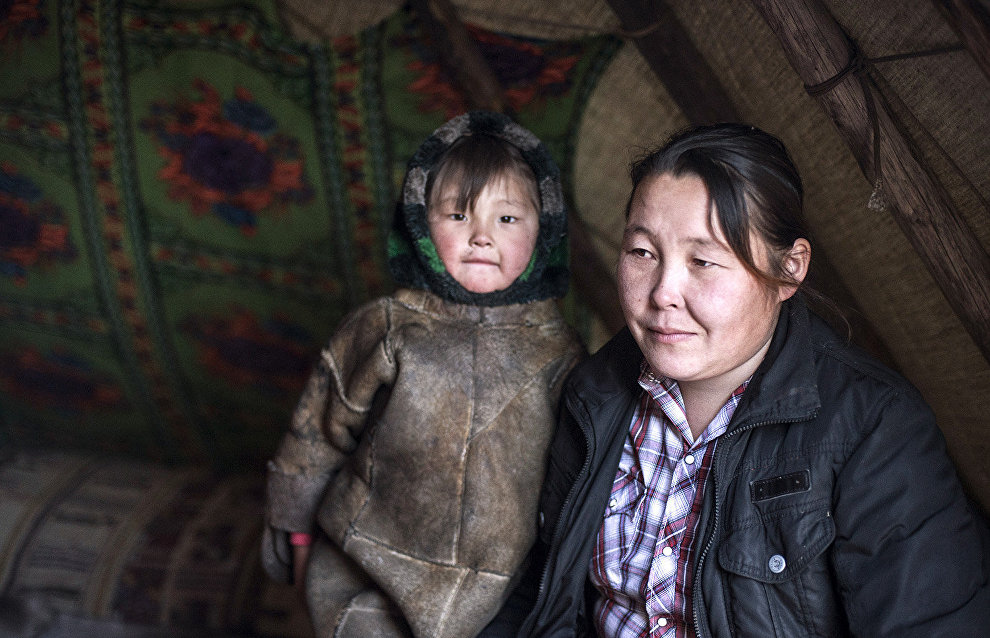Focusing on the health of Arctic residents
What health problems do the indigenous peoples of Yamal face?
The local ethnic groups consist of two communities. The first includes nomadic tundra dwellers and the second are those living in towns and trading posts. Nomads are more prone to injuries, acute health disorders and diseases. This presents the greatest problem in the context of quickly treating tundra residents and providing advice to them. Nomads face similar situations all over the world due to their lifestyle, the absence of local medical services, communications problems, and bad roads.
Our region has other negative factors, including the cold climate and relatively poor diet. The local climate makes people susceptible to numerous health disorders and diseases, including those of the locomotor and respiratory systems, rheumatic ailments linked with exposure and hypothermia. The harsh Arctic nature slows the metabolism and calls for a vitamin rich diet. But this is difficult if people deviate from traditional eating habits, because the tundra residents don't carry enough fruits and berries with them.
The nomadic families carry many essential items with them, but don't have enough medications, plants or herbs. There are very few unnecessary items, if any, inside chums because nomads are guided by austerity.
Town dwellers are less susceptible to cold weather because of better living conditions. But their lifestyle changes, they spend less time moving around, and they face health disorders that are typical of civilized society, including cardiovascular diseases and disrupted metabolism.
Socioeconomic factors also come into play, people's mentality changes, and they have trouble adapting to new living conditions. The life of tundra nomads hinges on certain laws and is subject to a very strict regimen. When these nomads settle in towns, they have to change their lifestyle, and this may prove difficult for some people. This causes various negative social consequences, including smoking and alcohol abuse. In part, this may be linked with unemployment and professional frustrations.
People change their eating habits; they consume less reindeer meat and fish, and start eating more carbohydrate-rich foods which don't adequately compensate for the rigorous Arctic environment. You see, the traditional foods boost the body's adaptability. When people switch to imported foods, their adaptability is gradually impaired.
In what way do local foods help the human body adapt to the Arctic environment?
For as long as we can remember, the northern ethnic groups have eaten fats and proteins with an anti-oxidant potential. Today, most urban dwellers prefer carbohydrates, and this metabolic pattern is less effective for Arctic residents.
People mostly eating fats and proteins can cope with cold weather and magnetic fluctuations more effectively. While studying the indigenous diet, we calculated the minimum reindeer-meat and local-fish consumption levels to reduce the risk of blood-circulation, metabolic and respiratory disorders and to maintain strong adaptability to the Arctic environment.
The Yamal-Nenets Autonomous Area produces innovative foods based on the useful properties of local plants and herbs. Can you say a few words about these foods and their possible applications?
The Arctic is renowned for its tense and rapid two-month natural cycle. Consequently, the natural foods and plants contain several times more bioactive substances than those in central or southern Russia where the vegetation period lasts four to six months and even longer. Northern natural foods and plants provide many more bioactive substances. We have selected the most promising plants that can be harvested and provide these bioactive substances. We've studied about 20 prospective plants that can be used effectively for these purposes. Some are quite popular, including reindeer moss and northern berries, such as cranberries, bilberries and cowberries. Still others are little-known, including dwarf birch and sphagnum moss.
We want to use the advanced hi-tech fluid extraction method for obtaining bioactive substances in the most sparing and noninvasive manner possible. This Russian invention has been around for quite a while, but it has been upgraded over the past few years, productivity has increased, modern technology has been developed, and these production processes are expanding worldwide. We think that this would be quite promising for our region.
We believe it's possible to solve some of the health problems of those living in the extreme north by enriching their diet with substances extracted from plants, animal meat and fish. In addition, we could involve local residents in picking herbs and berries which is a traditional occupation for these ethnic groups. This would allow them to use their native skills.
In the future, we could produce foods for other regions because these substances allow the body to function effectively in any extreme environment, including the high seas, the mountains, sports competitions, military operations and hazardous production facilities, etc. These foods are in high demand all over the world, with many prospective customers eager to buy them.
I think we and other producers could carve out a niche in this market segment.
The research center's experts are developing new medical technologies to support people working in adverse conditions. Can you tell us a bit more about these technologies?
We are evaluating the effects of hypothermia, and our projects closely resemble fundamental research. We want to develop substances that prevent sudden and long-term hypothermia based on the bioactive substances being extracted from plants and animal tissue. These substances also boost the capacity to work.
There are now plans to develop the Northern Sea Route. In the next few years, dozens and even hundreds of vessels with tens of thousands of sailors, mostly from the southern countries, including the Philippines, China and India, will start plying the Arctic waters. Ship crews are unprepared for a close encounter with the great white north in terms of their cultural backgrounds and previous experiences. The Arctic remains somewhat uninviting even in the summer. People working in the high latitudes need food to boost their resilience, biological additives and special clothes. We are doing our best to meet this demand.
